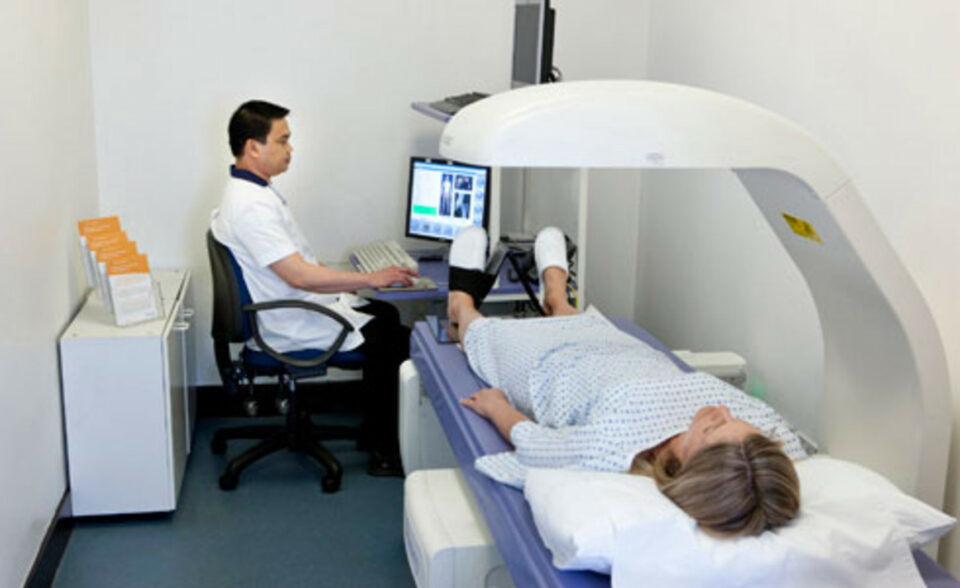If your healthcare provider has recommended that you get a DEXA (dual-energy x-ray absorptiometry) scan, you may be wondering what’s involved in this diagnostic test. A DEXA scan is a quick, painless, and non-invasive way to measure your bone mineral density (BMD) and assess your risk for osteoporosis. Here’s what you can expect when getting a DEXA scan.
What is a DEXA Scan?
A DEXA scan uses very low doses of ionizing radiation in two different energy beams to examine the inside of your bones. It allows your doctor to precisely measure the BMD of your hips, spine, and sometimes other bones. This information is then compared to the expected bone density of a healthy young adult to give you a T-score, which indicates if you have low bone mass or osteoporosis.
Why Might You Need a DEXA Scan?
There are several reasons why your doctor may order a DEXA scan, including:
- You are a woman over age 65 or a man over 70 (routine screening for osteoporosis)
- You have risk factors for low bone mass or osteoporosis
- You have already been diagnosed with osteoporosis
- You have had a fracture that may be related to low bone density
- You are taking medication that can cause bone loss
- You need to monitor the effectiveness of osteoporosis treatment
DEXA scans are incredibly useful for catching osteoporosis early and helping to prevent fractures in at-risk individuals.
Preparing for Your DEXA Scan
There is very little preparation needed for a DEXA ultrasound services. You can eat and drink normally leading up to the test. You should avoid taking calcium supplements for at least 24 hours before your scan, as the extra calcium in your body can skew the results. It’s also recommended that you wear clothing without any metal zippers, buttons, or decorations, as metal objects can interfere with the x-ray beam.
When you arrive for your DEXA scan appointment, you’ll be asked to remove any metal objects such as jewelry, belts, or keys. You may also need to change into a gown, depending on the facility’s procedures.
During the DEXA Scan
- The DEXA scan itself takes only 10-20 minutes. The technician will have you lie down on a padded table, and a specialised scanner arm will pass over your body. You’ll need to remain very still and may be asked to hold your breath for a few seconds while the images are being taken.
- The scanner will send two low-dose x-ray beams through your bones while a detector measures how much x-ray energy gets absorbed. Bone absorbs a lot more x-ray energy than soft tissue, allowing the machine to calculate bone density very precisely.
- Most DEXA scans focus on the hips and spine, as these are the areas most vulnerable to osteoporotic fractures. Some scans may also look at your forearm or total body bone density. The technician may need to reposition you a few times during the scan in order to capture all the necessary images.
After the Scan
Once the scan is complete, you can resume your normal daily activities right away. There are no side effects from this type of low-dose x-ray examination.
Your doctor will receive a detailed report analyzing your bone density results. You’ll likely have a follow-up appointment to go over the findings and talk about any treatment recommendations if your BMD is lower than expected.
DEXA scans have become the gold standard for diagnosing osteoporosis and assessing fracture risk because they are safe, quick, and incredibly precise. The radiation exposure from a DEXA is much lower than that from a standard x-ray. The benefits of accurately assessing bone health greatly outweigh the small amount of radiation used.
Monitoring Bone Density Over Time
For most people at risk of osteoporosis, doctors recommend getting a DEXA scan every 1-2 years. This allows your physician to monitor any changes in your bone density over time and evaluate if your bone loss rate is increasing.
People who have already been diagnosed with osteoporosis or who are taking medication for bone loss may need even more frequent DEXA scans, such as annually. This helps determine if the treatment is effectively slowing or stopping additional bone density decline.
DEXA scans are crucial tools for detecting osteoporosis early, predicting future fracture risk, and monitoring the effectiveness of treatment. If your BMD shows signs of low bone mass or osteoporosis, your doctor may recommend lifestyle changes, calcium and vitamin D supplements, weight-bearing exercise, fall prevention strategies, and/or medication.
Understanding Your Bone Density Numbers
When you get your DEXA results, your doctor will go over your T-score and what it means:
- A T-score of -1.0 or above is considered normal bone density
- A score between -1.0 and -2.5 indicates low bone mass (osteopenia)
- A T-score of -2.5 or lower is diagnostic for osteoporosis
The lower your T-score, the higher your risk is for experiencing an osteoporosis-related fracture in the future. However, many other factors beyond just BMD are taken into consideration when assessing overall fracture risk, such as age, weight, previous fractures, and other medical conditions.
Staying Calm and Getting Answers
Try not to worry too much if your DEXA results show some bone loss – this is very common as we age. Osteopenia and osteoporosis are manageable conditions when properly diagnosed and treated.
Your doctor will go over your scan, explain what the numbers mean for your particular situation, and recommend any needed treatment or lifestyle adjustments. Don’t hesitate to ask questions about anything you don’t understand regarding the scan results or next ultrasound services.
Undergoing a quick, painless DEXA scan is a proactive way to get a clear picture of your current bone health. Detecting low bone mass early makes it easier to take steps to reduce bone loss and prevent osteoporosis-related fractures down the road. With the proper treatment and monitoring, the vast majority of people with osteopenia or osteoporosis can avoid serious complications.

